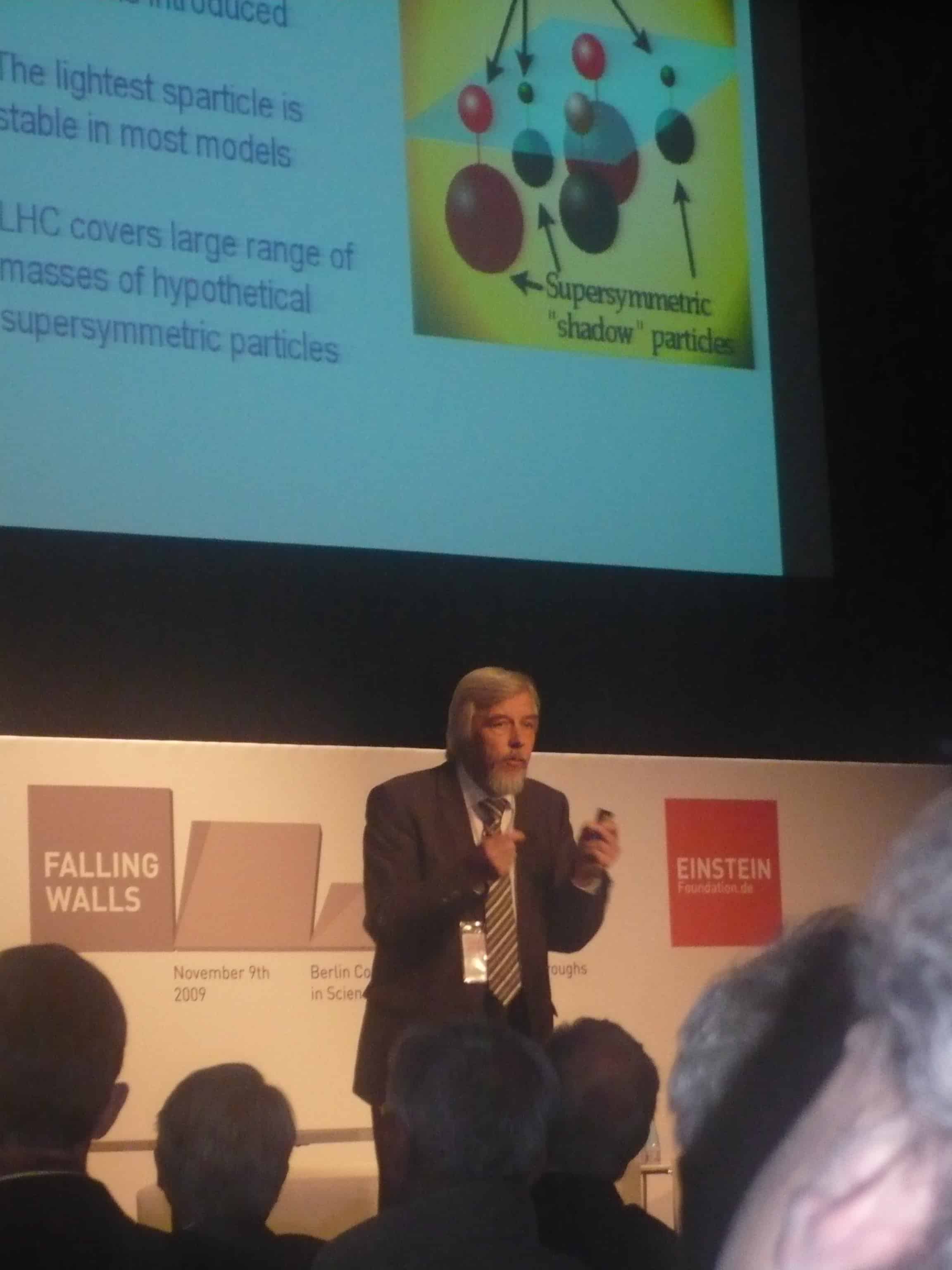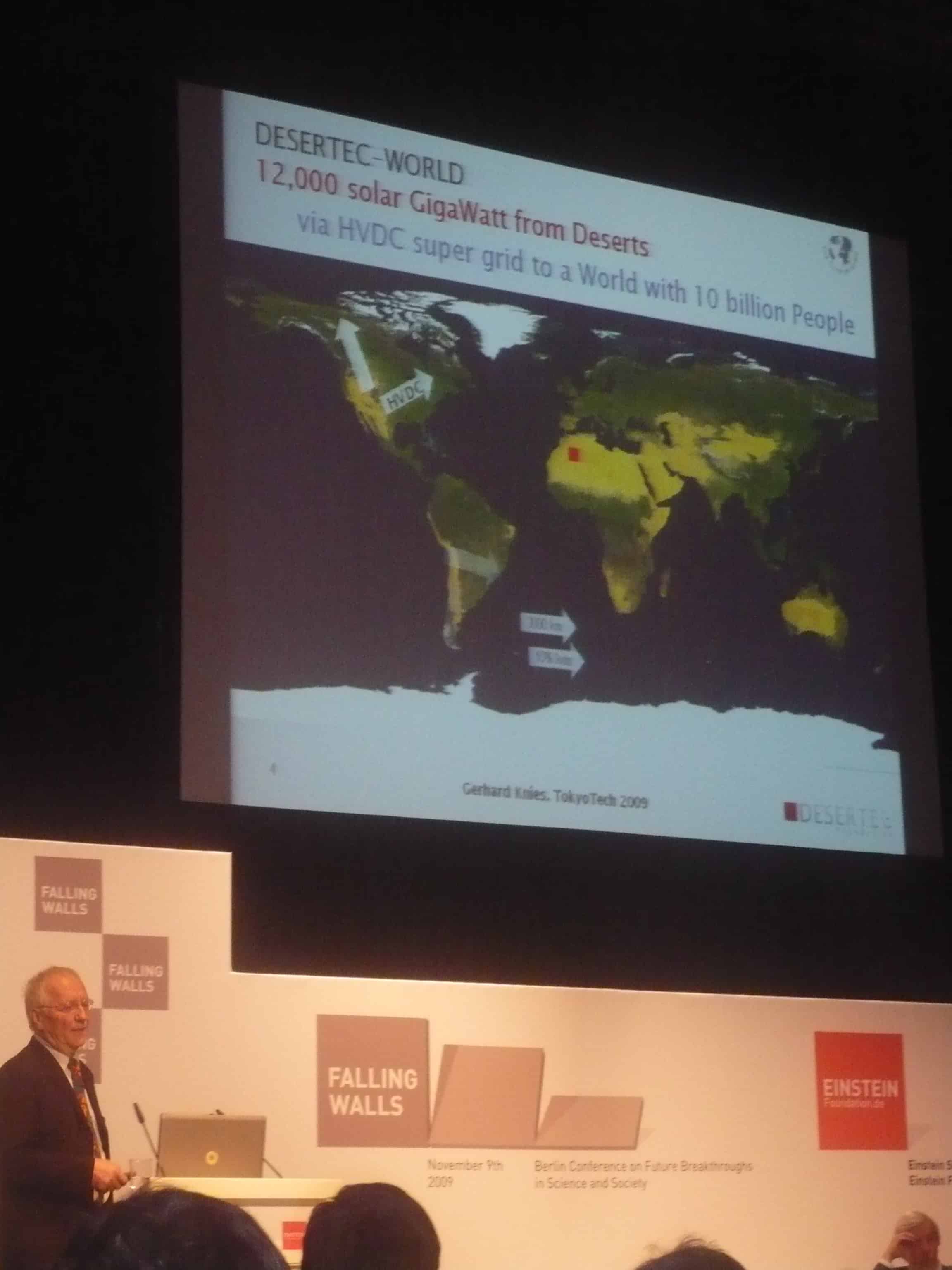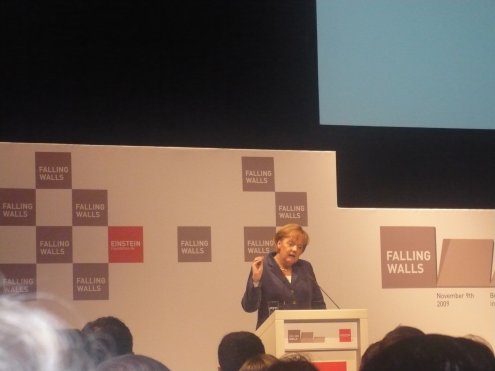By Michael Banks
“The fall of the Wall changed my life, but it didn’t put a dampener on my passion for science,” said German chancellor Angela Merkel at yesterday’s Falling Walls conference held in Berlin.
I was in Berlin to attend the one-day event, which was organized by the Einstein Foundation. It was held in a former water pumping station in the east of the city to celebrate 20 years of the fall of the Berlin Wall on 9 November 1989.
Top researchers from different backgrounds gave 15 minute talks about what they believe are modern walls in their disciplines.

Rolf-Dieter Heuer discusses walls of the hidden universe
Merkel, a former physicist, delighted scientists by attending the conference to talk to researchers about her background and about breaking the walls of the 21st century.
Speaking for 25 minutes, Merkel outlined tackling climate change as a wall that needs to be overcome. She said this was a challenge that cannot be done alone and needs international cooperation — something that scientists excel at and could teach politicians a lesson or two about.
The list of speakers was quite impressive from Nobel Peace laureate Muhammad Yunus from the Yunus Centre, who talked about how to break the wall of introducing “social business” into today’s corporate giants to Alain Aspect from the Écoles Polytechnique who talked about breaking down the wall of quantum weirdness and his experiments on single photon diffraction.

Using the desert to power the world
In the third session, entitled “walls around our universe”, Rolf-Dieter Heuer, director-general of the CERN particle-physics lab, told the 500 strong audience about the Large Hadron Collider and how it could break the wall of the hidden universe by possibly explaining what makes up dark matter and gives particles their mass.
Also speaking was Norbert Holtkamp, deputy director general of the ITER fusion experiment, who talked about breaking the wall of limitless energy via fusion.
Perhaps the most amusing part of the conference was provided by an actor, who, when the speaker went over the 15 minute allowance, came on stage to do an act like pretending to sweep the floor or starting to blow balloons up.
Perhaps Gerhard Knies from the Desertec foundation, which is planning to build large solar energy plant in North Africa, gave members of the audience most food for thought when he talked about breaking the wall of the fossil age. “The whole desert gets in six hours what mankind needs for a year,” he said.




